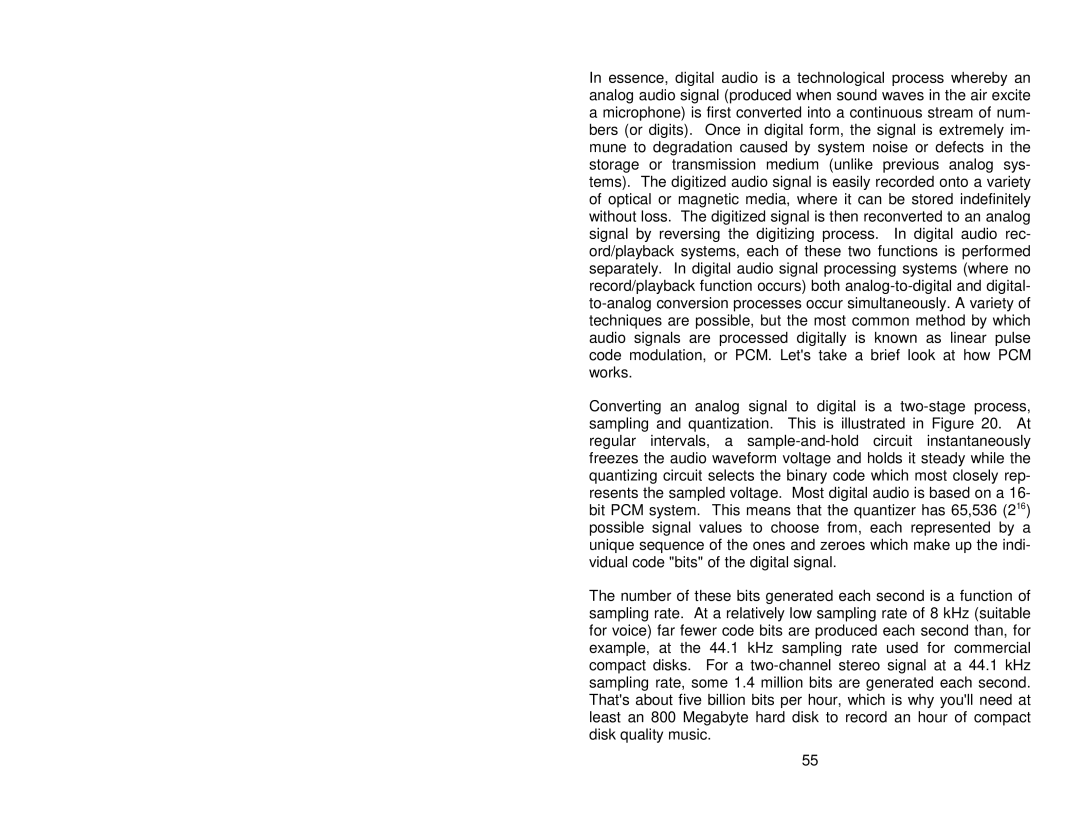In essence, digital audio is a technological process whereby an analog audio signal (produced when sound waves in the air excite a microphone) is first converted into a continuous stream of num- bers (or digits). Once in digital form, the signal is extremely im- mune to degradation caused by system noise or defects in the storage or transmission medium (unlike previous analog sys- tems). The digitized audio signal is easily recorded onto a variety of optical or magnetic media, where it can be stored indefinitely without loss. The digitized signal is then reconverted to an analog signal by reversing the digitizing process. In digital audio rec- ord/playback systems, each of these two functions is performed separately. In digital audio signal processing systems (where no record/playback function occurs) both
Converting an analog signal to digital is a
The number of these bits generated each second is a function of sampling rate. At a relatively low sampling rate of 8 kHz (suitable for voice) far fewer code bits are produced each second than, for example, at the 44.1 kHz sampling rate used for commercial compact disks. For a
55
